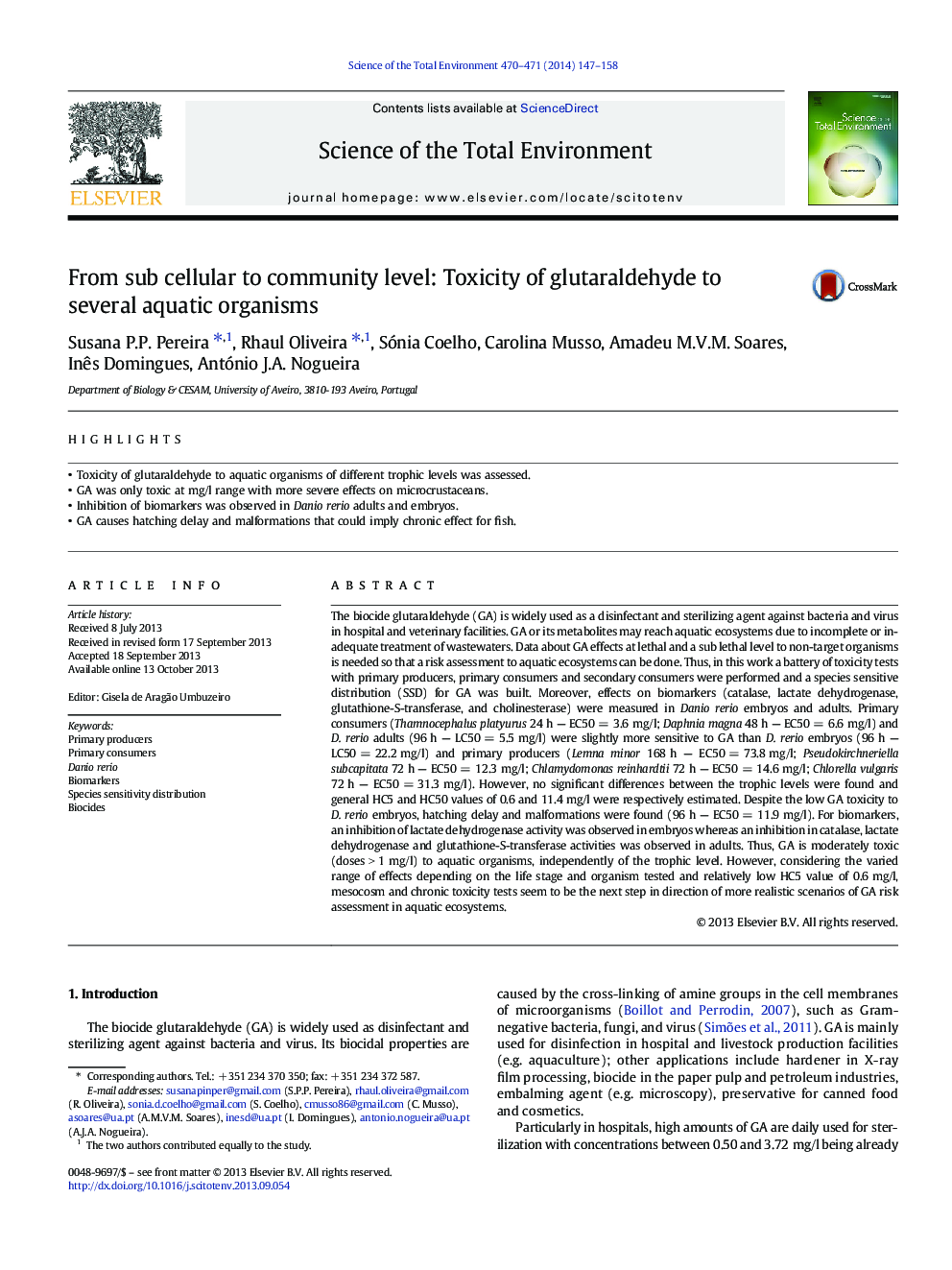| کد مقاله | کد نشریه | سال انتشار | مقاله انگلیسی | نسخه تمام متن |
|---|---|---|---|---|
| 6331315 | 1619793 | 2014 | 12 صفحه PDF | دانلود رایگان |
- Toxicity of glutaraldehyde to aquatic organisms of different trophic levels was assessed.
- GA was only toxic at mg/l range with more severe effects on microcrustaceans.
- Inhibition of biomarkers was observed in Danio rerio adults and embryos.
- GA causes hatching delay and malformations that could imply chronic effect for fish.
The biocide glutaraldehyde (GA) is widely used as a disinfectant and sterilizing agent against bacteria and virus in hospital and veterinary facilities. GA or its metabolites may reach aquatic ecosystems due to incomplete or inadequate treatment of wastewaters. Data about GA effects at lethal and a sub lethal level to non-target organisms is needed so that a risk assessment to aquatic ecosystems can be done. Thus, in this work a battery of toxicity tests with primary producers, primary consumers and secondary consumers were performed and a species sensitive distribution (SSD) for GA was built. Moreover, effects on biomarkers (catalase, lactate dehydrogenase, glutathione-S-transferase, and cholinesterase) were measured in Danio rerio embryos and adults. Primary consumers (Thamnocephalus platyurus 24 h - EC50 = 3.6 mg/l; Daphnia magna 48 h - EC50 = 6.6 mg/l) and D. rerio adults (96 h - LC50 = 5.5 mg/l) were slightly more sensitive to GA than D. rerio embryos (96 h - LC50 = 22.2 mg/l) and primary producers (Lemna minor 168 h - EC50 = 73.8 mg/l; Pseudokirchneriella subcapitata 72 h - EC50 = 12.3 mg/l; Chlamydomonas reinhardtii 72 h - EC50 = 14.6 mg/l; Chlorella vulgaris 72 h - EC50 = 31.3 mg/l). However, no significant differences between the trophic levels were found and general HC5 and HC50 values of 0.6 and 11.4 mg/l were respectively estimated. Despite the low GA toxicity to D. rerio embryos, hatching delay and malformations were found (96 h - EC50 = 11.9 mg/l). For biomarkers, an inhibition of lactate dehydrogenase activity was observed in embryos whereas an inhibition in catalase, lactate dehydrogenase and glutathione-S-transferase activities was observed in adults. Thus, GA is moderately toxic (doses > 1 mg/l) to aquatic organisms, independently of the trophic level. However, considering the varied range of effects depending on the life stage and organism tested and relatively low HC5 value of 0.6 mg/l, mesocosm and chronic toxicity tests seem to be the next step in direction of more realistic scenarios of GA risk assessment in aquatic ecosystems.
Journal: Science of The Total Environment - Volumes 470â471, 1 February 2014, Pages 147-158
